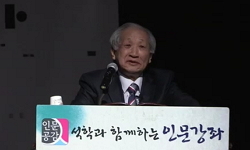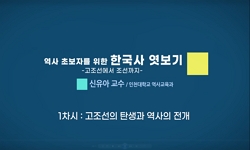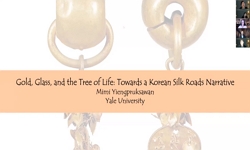영주 순흥지역은 5세기 중~후엽부터 신라 고분문화의 영향을 받기 시작하고 이때 수혈식석곽이 출현한다. 5세기 후엽 이후로는 대형 횡구식석실을 견고하게 축조할 수준의 기술과 인력이 도...
http://chineseinput.net/에서 pinyin(병음)방식으로 중국어를 변환할 수 있습니다.
변환된 중국어를 복사하여 사용하시면 됩니다.
- 中文 을 입력하시려면 zhongwen을 입력하시고 space를누르시면됩니다.
- 北京 을 입력하시려면 beijing을 입력하시고 space를 누르시면 됩니다.

횡혈식석실로 본 순흥지역 신라 벽화고분의 성격 = Characteristics of Silla mural tombs in Sunheung region seen from stone chamber tombs with horizontal entrance
한글로보기https://www.riss.kr/link?id=A109260840
-
저자
김준식 (경북대학교)
- 발행기관
- 학술지명
- 권호사항
-
발행연도
2024
-
작성언어
Korean
-
주제어
순흥지역 ; 벽화고분 ; 신라 ; 횡혈식석실 ; 고분군 ; 위계 ; Sunheung region ; mural tombs ; Silla ; stone chamber tombs with horizontal entrance ; ancient tombs ; rank
-
등재정보
KCI등재
-
자료형태
학술저널
-
수록면
137-171(35쪽)
- 제공처
-
0
상세조회 -
0
다운로드
부가정보
국문 초록 (Abstract)
횡혈식석실이 유행한 6세기 이후의 고대 사회는 국가정비 및 지배체제가 확립되었기 때문에 이를 활용한 묘제의 위계화도 가능한 시기에 해당한다. 이에 순흥지역 횡혈식석실은 신라 고분 편년 및 6세기 중엽 이후 신라 횡혈식석실 위계에 따라 2등급과 3등급이 축조되었음을 알 수 있었고, 여기서 등급이 가장 높은 어숙묘를 기준으로 피장자의 신분과 위계를 추정하였다.
순흥지역에서 확인된 두 기의 벽화고분 역시 신라 횡혈식석실 체계 속에서 이해할 필요가 있으며, 당시 신라 횡혈식석실의 구조와 편년에 근거하여 모두 6세기 후엽에 축조된 것으로 보았다. 본 연구는 역사고고학의 관점으로 순흥지역 벽화고분의 축조연대 및 위계에 대해서 보다 더 선명하게 접근한 점에서 의의를 찾을 수 있다.
영주 순흥지역은 5세기 중~후엽부터 신라 고분문화의 영향을 받기 시작하고 이때 수혈식석곽이 출현한다. 5세기 후엽 이후로는 대형 횡구식석실을 견고하게 축조할 수준의 기술과 인력이 도입되고, 6세기 중엽까지 대규모 고분군을 조성하는 등 고분문화의 전성기를 맞이하게 된다. 그리고 이때를 중심으로 신라 중앙과 관계된 위세품이 다량 부장되는 것에서 당시 순흥지역의 위상을 엿볼 수 있다. 6세기 중엽 이후로는 고분의 밀집도가 낮아져 고분군의 규모가 축소되는 양상이나 이는 당시 한반도 남부지역의 전반적인 고분 축조의 흐름을 반영한 결과로 보인다. 이때 순흥지역의 묘제는 횡혈식석실이 대표적이고, 역시 신라 고분문화 및 체계 속에서 이해할 수 있다.
횡혈식석실이 유행한 6세기 이후의 고대 사회는 국가정비 및 지배체제가 확립되었기 때문에 이를 활용한 묘제의 위계화도 가능한 시기에 해당한다. 이에 순흥지역 횡혈식석실은 신라 고분 편년 및 6세기 중엽 이후 신라 횡혈식석실 위계에 따라 2등급과 3등급이 축조되었음을 알 수 있었고, 여기서 등급이 가장 높은 어숙묘를 기준으로 피장자의 신분과 위계를 추정하였다.
순흥지역에서 확인된 두 기의 벽화고분 역시 신라 횡혈식석실 체계 속에서 이해할 필요가 있으며, 당시 신라 횡혈식석실의 구조와 편년에 근거하여 모두 6세기 후엽에 축조된 것으로 보았다. 본 연구는 역사고고학의 관점으로 순흥지역 벽화고분의 축조연대 및 위계에 대해서 보다 더 선명하게 접근한 점에서 의의를 찾을 수 있다.
다국어 초록 (Multilingual Abstract)
In the ancient society of the 6th century, when stone chamber tombs with horizontal entrance were popular, the state organization and governance system were established, so it was possible to use this to rank tombs. Therefore, it was found that the stone chambers tombs with horizontal entrance in the Sunheung region were built in grades 2 and 3 according to the hierarchy of stone chambers tombs with horizontal entrance in Silla. Based on this, the status and hierarchy of the buried were estimated based on the Tombs of Eo-suk in Sunheung with the highest level of stone chamber.
The two mural tombs identified in the Sunheung area also need to be understood within the system of stone chambers tombs with horizontal entrance in Silla. Based on the structure and chronology of the stone chambers tombs with horizontal entrance in Silla at the time, they were all considered to have been built in the late 6th century. This study is significant in that it provides a clearer historical archaeological approach to the construction period and hierarchy of the mural tombs in the Sunheung region.
The Sunheung area of Yeongju began to be influenced by the Silla tomb culture in the mid to late 5th century, and stone lined tombs were built at this time. From the late 5th century onwards, the technology and manpower required to firmly construct la...
The Sunheung area of Yeongju began to be influenced by the Silla tomb culture in the mid to late 5th century, and stone lined tombs were built at this time. From the late 5th century onwards, the technology and manpower required to firmly construct large-scale stone chamber tombs were introduced. In the early 6th century, the tomb culture reached its heyday, with a large group of tombs being built. And the status of the Sunheung region at that time can be seen in the fact that a large number of prestige goods related to the central part of Silla were buried around this time. Since the mid-6th century, the density of tombs has decreased and the size of the tomb group has been decreasing. However, this appears to be a result that reflected the overall trend of tomb construction in the southern region of the Korean Peninsula at the time. At this time, the typical tomb ritual is a stone chamber tombs with horizontal entrance. And the structure can also be understood within the context of Silla's tomb culture and system.
In the ancient society of the 6th century, when stone chamber tombs with horizontal entrance were popular, the state organization and governance system were established, so it was possible to use this to rank tombs. Therefore, it was found that the stone chambers tombs with horizontal entrance in the Sunheung region were built in grades 2 and 3 according to the hierarchy of stone chambers tombs with horizontal entrance in Silla. Based on this, the status and hierarchy of the buried were estimated based on the Tombs of Eo-suk in Sunheung with the highest level of stone chamber.
The two mural tombs identified in the Sunheung area also need to be understood within the system of stone chambers tombs with horizontal entrance in Silla. Based on the structure and chronology of the stone chambers tombs with horizontal entrance in Silla at the time, they were all considered to have been built in the late 6th century. This study is significant in that it provides a clearer historical archaeological approach to the construction period and hierarchy of the mural tombs in the Sunheung region.
동일학술지(권/호) 다른 논문
-
- 경북대학교 영남문화연구원
- 박용찬
- 2024
- KCI등재
-
선·면 단위 등록문화유산과 에코뮤지엄의 융합 방안 연구 -영주 근대역사문화거리를 중심으로-
- 경북대학교 영남문화연구원
- 이한주
- 2024
- KCI등재
-
임진왜란 전후 黃暹의 정책 건의와 그에 관한 李瀷의 견해
- 경북대학교 영남문화연구원
- 전병철
- 2024
- KCI등재
-
- 경북대학교 영남문화연구원
- 노규선
- 2024
- KCI등재




 KCI
KCI KISS
KISS






